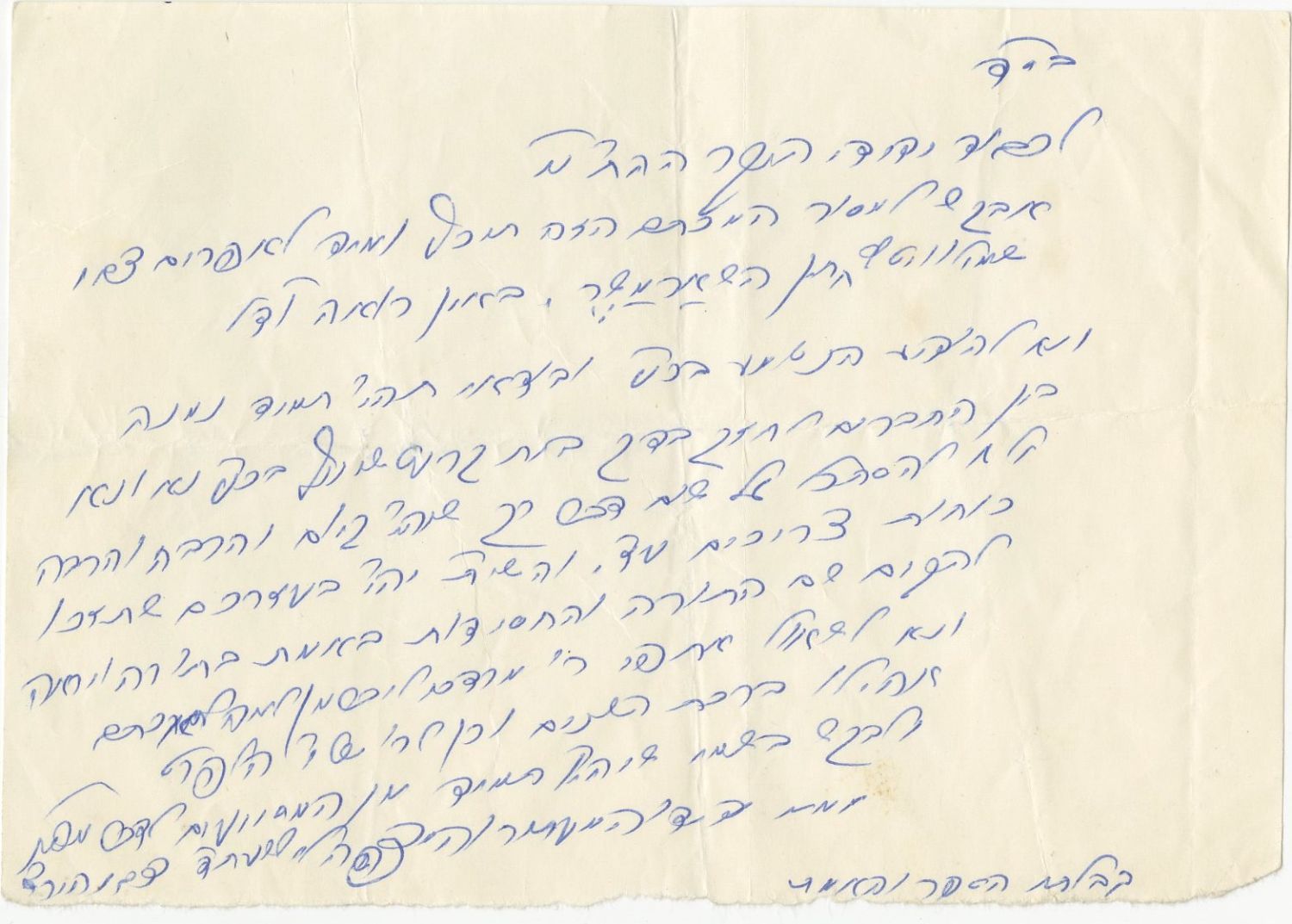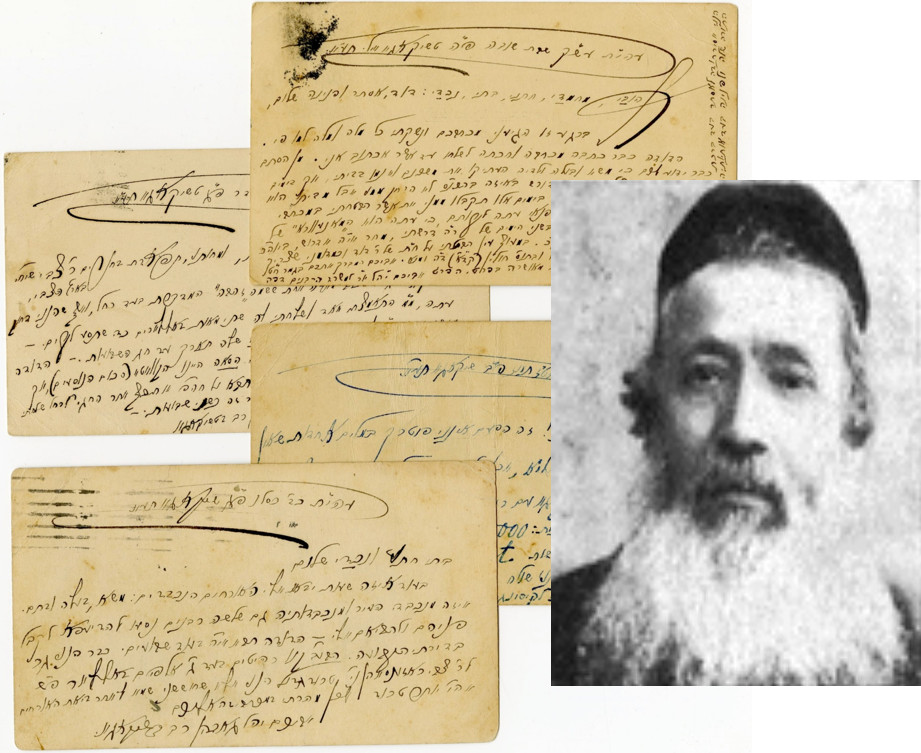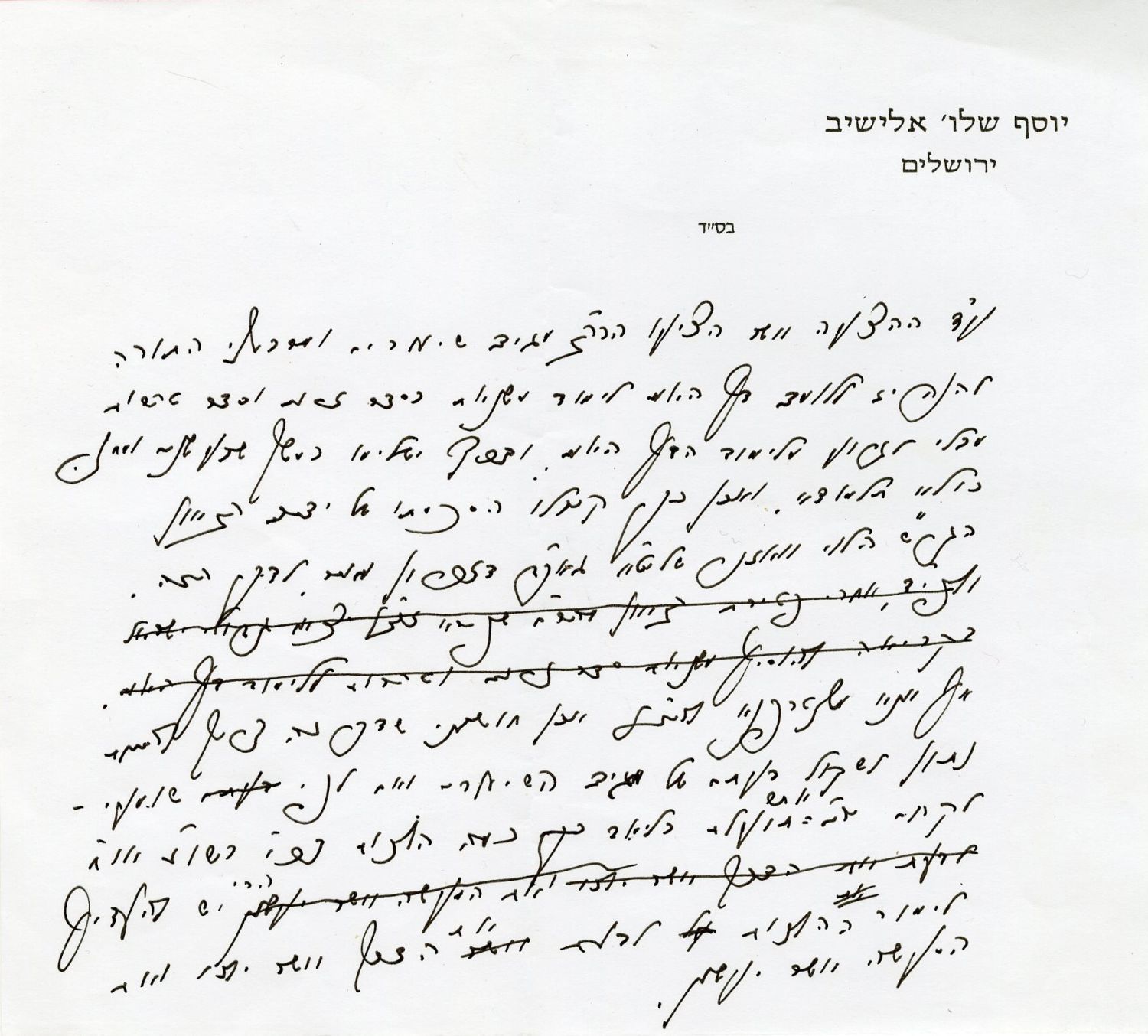"May G-d be blessed on the eve of the Holy Sabbath, Parashat Beshalch
Honorable Rabbi ... ... Mordechai Tzofnat Shlit'a, and Honorable Rabbi ... Yishai Kushel ... Many thanks to you for your efforts and your work for the sake of the mitzvah ... and especially at the present time that the situation of holding the Yeshiva is dwindling and ruined by the time turmoil, and the learners remain without means for a living, it is really Saving lives. And we endeavor to keep our yeshivas in place, lest this glorious place of Torah be stopped, That this is our Our fortress always, and especially now that our people need heavenly protection and multiple protection, the reward of the Torah can much protect us. And I will ask for the days to come ... for the existence of this G-d's Temple, and for the Saving lives of the precious souls who are devoted to the Torah, day and night ... And thanks to the Torah's support, G-d blesses you successfully in all your actions ...To all the volunteers ... who will be honored to see our salvation and the salvation of our people, and Nechamat Zion as they wish... Israel Meir HaCohen of Radin ... '.
Letter signed by Maran Hefetz Chaim to strengthen the Radin Yeshiva during World War I.
From the founding of the Radin Yeshiva in 1869, The Yeshiva knew ups and downs economically. Its founded by Maran Hefetz Chaim in 1869 included yeshiva and Kolel. Living conditions in Radin were difficult. The expectation of gathering enough local financial support to run a big and successful institution was low in the first place. Because of this, the Hefetz Haim made sure to send some of the guys to other Yeshivas there were more favorable conditions and to keep a limited registration. The students in the Yeshiva were content with sleeping on benches and were called "Prushim" because they withdrew from world life and devoted themselves to Torah study. The food at the yeshiva was provided by the Haim Chaim wife..The number of students at the yeshiva remained small until 1886, when the Hefetz Chaim imposed on his son-in-law Rabbi Zvi Hirsch Levinson the ongoing management of the yeshiva. Following his appointment, the yeshiva expanded and conditions improved. In the year 1904, as the number of students grew, the Beit Midrash became too small to accommodate all the students and a new building was built. Over time, the number of students increased and when they reached hundreds, they had to attend the local synagogue. In the year 1912, the yeshiva administration decided that a one large and central building was needed for all yeshiva students.The original building was demolished to make room for a new building large enough to accommodate all the students numbering over 300 at the same time. The Chafetz Chaim raised the 15,000 rubles needed to carry out the task on its own mainly from Russian sources, and in 1913 the construction of the new building was completed. It included not only a spacious study hall but also living rooms, side rooms for various uses, a room where medical treatments were provided and a library where thousands of books were kept. At that time, the yeshiva was at the height of its spiritual and economic boom. But now, when the yeshiva boom was at its peak, the yeshiva had to face a real existential test.
During the outbreak of the First World War, the German occupation of the Russian Federation severely affected the income of the yeshiva. At this difficult hour, the letter before us was written when it seemed still that the yeshiva would survive in the permanent residence. This is what Maran Hefetz Haim's words refer to in his letter: "And we endeavor with all our might to hold our yeshiva in its place, " which is what led Maran Hefetz Haim to appeal to the well-known Rabbi Mordechai Tzofnat and Rabbi Yeshayahu Kushel in describing the yeshiva's condition as "truly Saving lives" , And ask them to work for immediate assistance.
Shortly thereafter, during the Russian withdrawal from the German army, when no choice was left, it was finally decided to split the yeshiva in two to maintain its existence, one part remaining in Radin and the other moving into Russia which at that time was a safer place. After wanderings and splits to various places of refuge during the war, the yeshiva finally returned to Radin in the spring of 1921. When they returned to the yeshiva they found their inner part destroyed and abandoned. The Germans confiscated the building and made it a stable for their horses and ammunition warehouse. The students had to reside in the local seminary. The windows were shattered and the furniture was gone. The building was renovated and in time the yeshiva returned to flourish under the leadership of Rabbi Naftali Troop and Rabbi Moshe Landinsky.
[2] p. Writing of a Writer, with hand Signature of Maran Heifetz Chaim and his Ink Stamp. Very good condition.











